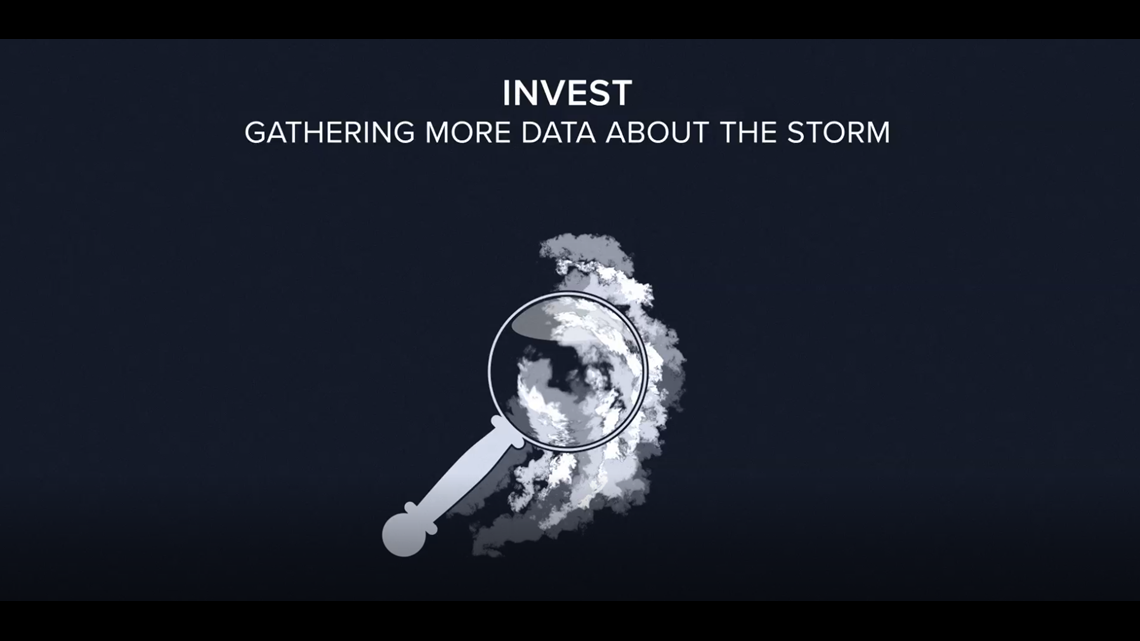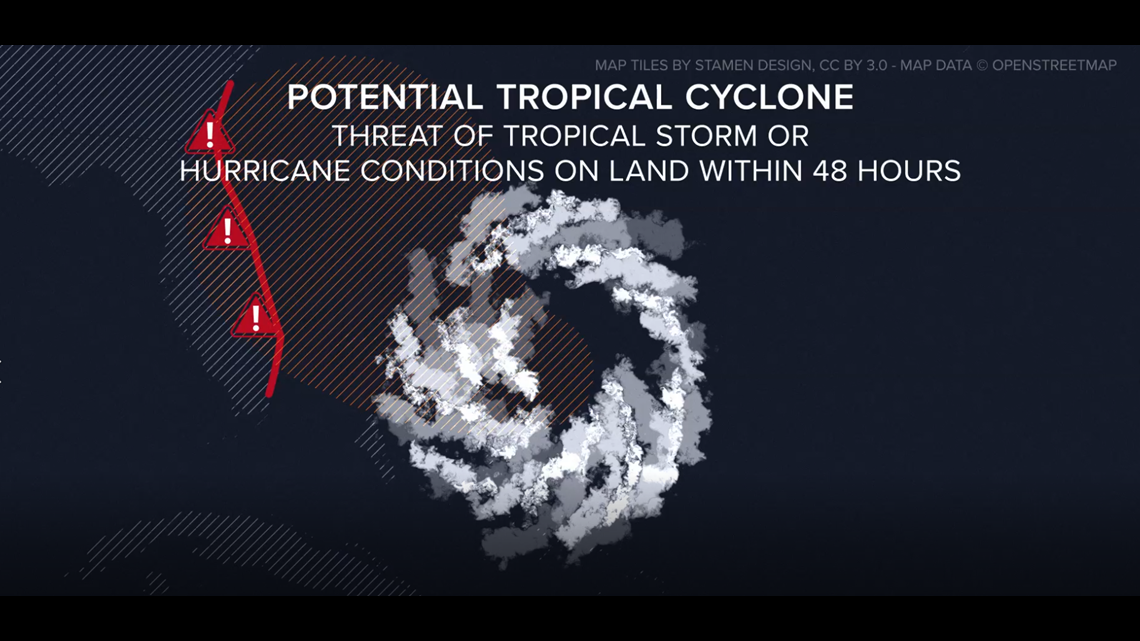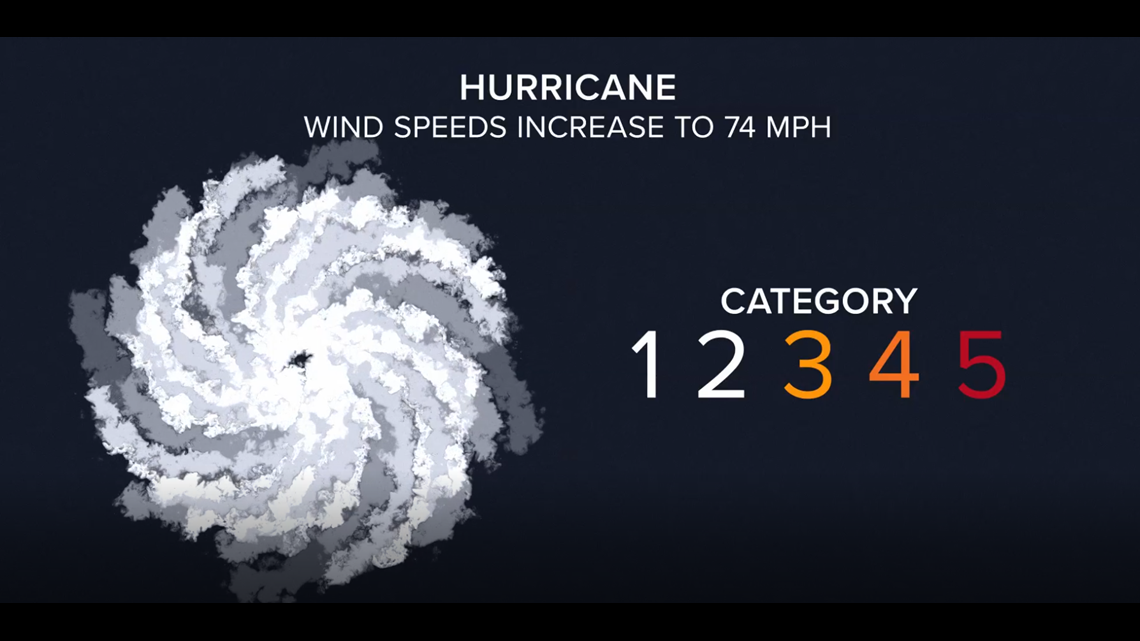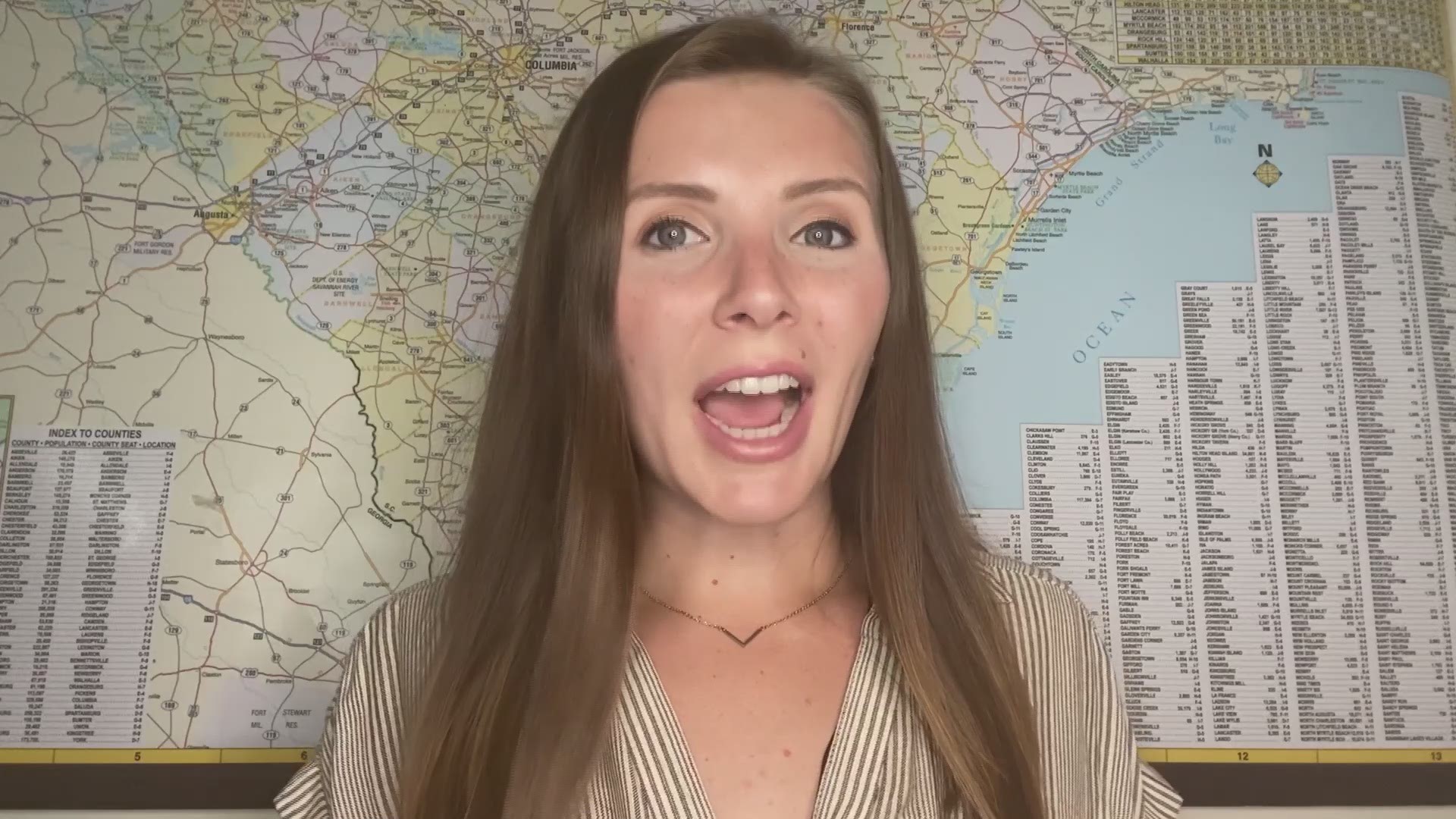COLUMBIA, S.C. — Meteorologists watch and track disturbances in the tropics well before they pose any threats to land or people.
In the busiest portion of hurricane season, this typically means watching tropical waves come off of the African coast and move west, although tropical cyclones can form anywhere along the tropics.
Before we jump into the different terms, I want to define the term "tropical cyclone". A cyclone is the broad name given to any tropical system. It can be in any ocean, in any part of the world, and it can be of any strength. The rest of the terms laid out will have certain characteristics that must be met.
The first term to discuss is a tropical disturbance. This is simply a discrete weather system with relatively organized shower and thunderstorm activity that originates in the tropics or subtropics.
If a tropical forecast center, like the National Hurricane Center, or NHC, is interested in gathering more information or data about a specific weather system that may develop it will then be called an Invest.


It's important to note that just because it’s called an invest, it does not necessarily correspond to a particular likelihood of development.
Now if that tropical disturbance is expected to strengthen and poses the threat of bringing tropical storm or hurricane conditions to land within 48 hours it will be labeled a Potential Tropical Cyclone, or PTC.
When the National Hurricane Center identifies a PTC… tropical watches and warnings can be issued as well as all NHC advisory and forecast track graphics.


RELATED: Local Forecast
From there you’re likely a little more familiar with the terms as the disturbance strengthens.
A Tropical Depression is a tropical cyclone that has sustained winds of 38 mph or less.
A system becomes a tropical storm when wind speeds increase above 38 mph. At this point it would be given a name.
A storm then becomes a hurricane when wind speeds increase to 74 mph.
From there The Saffir Simpson Hurricane Wind scale takes us through the different categories of a hurricane from 1 through 5 with a category three and above being considered a major hurricane.



